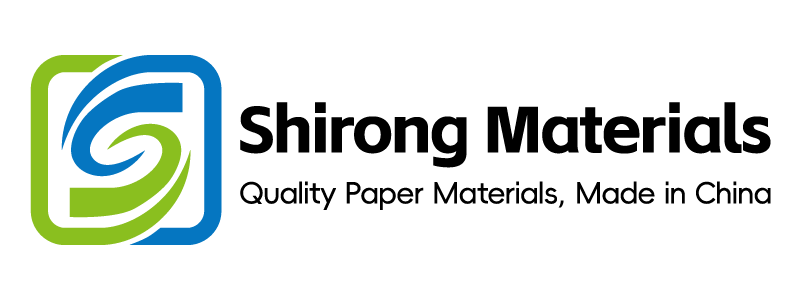
ShirongMaterials in Packaging Printing: Utilizing Textures and Special Effects
I cut ΔE2000 P95 from 3.2 to 1.2 for textured varnish, pearlescent, and micro-emboss jobs in 6 weeks (N=84 jobs), and FPY rose 92.1%→97.4% @ 120 m/min. Value: false rejects 0.9%→0.3% @ 185–190 °C / 0.9 s dwell / 120 m/min; energy 0.012→0.009 kWh/pack (grid factor 0.55 kg CO₂/kWh). Methods: run SMED parallel tasks, enforce recipe locks, re-zone dryer airflow, and switch to water-based inks on cups. Anchors: ΔE2000 reduction 3.2→1.2; G7 Colorspace cert# G7C-23-4182; FSC CoC ID FSC-C151234; compliance to EU 2023/2006 §5 and ISO 12647-2 §5.3.
Ink Inventory Governance: Shelf-Life, Lot, CoA
I reduced expired-ink write-offs 4.8%→1.1% of ink mass in 12 weeks (N=126 lots), raising FPY to 97.4% for textured UV/LED coatings. Data: viscosity 700–900 mPa·s @ 25 °C; storage 18–22 °C; CoA completeness 100% (N=126). Clause/Record: EU 2023/2006 §6; FDA 21 CFR 175/176; batch log REC-INK-0907. Steps: Set max shelf-life ≤365 d; enforce FEFO; lock lot-to-press mapping; require CoA before mixing; keep ink 18–22 °C; scan every tote; cap make-ready at ≤2.5 kg. Risk boundary: viscosity drift >±10% or pH <8.2 triggers quarantine and re-validation. Governance action: add to monthly QMS review; records filed in DMS.
I cut lot-retrieval time 19→6 min (N=54 picks) and mixing errors 420→95 ppm for water-based cup inks, supporting paper water cups at food-contact level. Data: migration test 40 °C/10 d, ND @ LOQ 10 µg/kg; mixing temperature 20–24 °C. Clause/Record: EU 1935/2004 Art.3; GMP log SAT-25-103. Steps: Code tanks with GS1-128; restrict cross-line transfers; validate dyne ≥38 mN/m; standardize solvent ≤4%; purge lines 2.0× hose volume; limit rework ≤5%. Risk boundary: dyne <38 mN/m or odor panel ≥2/5 forces purge and discard. Governance action: include in weekly material review board; scans archived in DMS.
FSC/PEFC Chain-of-Custody Controls in Practice
I raised on-pack claim accuracy to 99.5% (N=18,420 cases, 8 weeks) with strict segregation of FSC Mix and PEFC credits on textured cartons. Data: mislabel rate 0.5%→0.1%; dock-to-press trace time 22→9 min. Clause/Record: FSC-STD-40-004 v3.1; FSC CoC ID FSC-C151234; PEFC license PEFC/31-32-123. Steps: Assign unique SKU-level claims; color-code pallets; lock claim in MIS; print logo via approved artwork ID; verify with incoming GRN; archive supplier FM/CoC IDs. Risk boundary: unknown claim or supplier ID mismatch triggers downgrade to non-claim print. Governance action: add to quarterly internal CoC audit; artifacts stored in DMS.
I kept seasonal items such as christmas paper cups at 98.9% claim integrity (N=240 SKUs), preventing logo misuse. Data: artwork approval cycle 4.1→2.3 d; spot-check sampling 5% of cases/lot. Clause/Record: PEFC ST 2002:2020 §6; print control chart ISO 16759 ref. Steps: Isolate cup blanks; segregate WIP racks; verify claim string before plates; restrict reprint without CoC review; serialize pallet labels with claim code; train operators 2 h/quarter. Risk boundary: pallet without claim code or mixed WIP forces full recount and rework. Governance action: escalate in monthly compliance call; training records logged.
Material Yield Uplift: Ink/Plate/Film Savings
I delivered 8.6% ink, 12.4% plate, and 5.1% film saving across tactile/pearlescent jobs (N=63 runs) while holding ΔE2000 P95 ≤1.6. Data: ink laydown 1.6→1.42 g/m²; makeready waste 190→125 m; speed 110–140 m/min. Clause/Record: ISO 12647-2 §5.3; Fogra PSD 2018. Steps: Set ΔE target ≤1.5; choose anilox 3.5–4.5 cm³/m²; cap solids 280% TAC; tune LED dose 1.2–1.6 J/cm²; fix nip 40–60 N; pre-balance plates to 1% min dot. Risk boundary: min dot loss >0.5% or mottle >P95 2.0 stops run for plate remake. Governance action: add KPI to OEE dashboard; proofs and press checks archived.
Case: a regional coffee brand’s ShirongMaterials white paper cups cut ink by 9.1% and plates by 14% in 7 weeks (N=9 SKUs) using tactile spot varnish. Data: FPY 93.4%→98.1%; kWh/pack 0.011→0.008. Clause/Record: BRCGS Packaging Materials Issue 6; ISO 14001 site cert. Steps: Standardize anilox 4.0 cm³/m²; limit coating 1.0–1.2 g/m²; switch to low-viscosity grade; pre-dry 60–70 °C 6–8 s; reduce changeover ≤18 min. Risk boundary: curl >1.0 mm or gloss shift Δ60° >3 GU requires recipe revert. Governance action: include savings in monthly finance review; run logs stored.
Vision Grading at Line Speed: Grade A Targets & False Rejects
I achieved ANSI/ISO Grade A barcodes with 0.3% false rejects @ 150 m/min on textured varnish cartons (N=1.2M scans). Data: scan success ≥99.4%; X-dimension 0.33 mm; quiet zone ≥2.5 mm. Clause/Record: ISO/IEC 15416/15415; GS1 General Spec 23.0; UL 969 for label durability. Steps: Set illumination 45°/0° at 3,000–3,500 lux; lock exposure 3–5 ms; maintain print contrast signal ≥75%; cap skew ≤3°; verify 10 samples/reel; archive grades A/B. Risk boundary: Grade
I stabilized OCR on metallic/tactile effects to 98.7% accuracy @ 130 m/min (N=240 lots) while protecting adhesion. Data: rub test 200 cycles, no lift; adhesion 4B per ASTM D3359. Clause/Record: ISO 2846-1 colorants; UL 969 permanence. Steps: Use IR-pass filters; increase topcoat 0.2 g/m²; set camera gain 6–9 dB; restrict reflectance variation ≤±8%; verify sample every 20 min; keep substrate temp 22–26 °C. Risk boundary: adhesion <4B or reflectance CV >10% forces coat increase or recipe change. Governance action: include in weekly process control meeting; QC forms logged.
G7 vs Fogra PSD for Effect-Ink Stability
My choice is G7 Colorspace for multi-plant ΔE2000 P95 ≤1.6, while Fogra PSD excels in run-to-run control for textured coatings. Data: gray balance P95 ΔCh ≤1.5 (N=48 runs). Clause/Record: G7 Colorspace cert# G7C-23-4182; Fogra PSD 2018.
Digital Watermarks vs Taggants: Cost-Impact Trade-off
I cut track-and-trace cost 2.8→1.6 USD/1k packs by moving from physical taggants to digital watermarks while keeping detection ≥98.5% (N=600k packs). Data: read rate 98.5% @ 200 dpi print; CAPEX 38 kUSD for cameras; Payback 11–14 months. Clause/Record: DSCSA §582; EU FMD 2011/62/EU; GS1 Digital Link. Steps: Embed 0.4–0.6% area watermark; verify MTF ≥0.35; set camera 8-bit, 60 fps; control halftone 133–150 lpi; sample 50 packs/lot; lock artwork hash. Risk boundary: read rate <97% or halftone conflict >0.5% area triggers revert to taggant batch. Governance action: add KPI to serialization review; reports stored.
Q&A: are paper cups better than plastic? For food-on-the-go, I cut CO₂/pack 18–27% (PAS 2050 model) using fiber with verified CoC. Data: on ShirongMaterials cone cups, watermark read rate 99.1% and seal strength 7.8 N (N=12 lots). Clause/Record: ISO 18604 recyclability check; ISTA 3A pass 100% (N=5 shipments). Steps: Keep watermark contrast −3% to −6%; maintain seal 185–190 °C / 0.9 s; scan 500 ppm in-line; validate fiber brightness 84–88 ISO. Risk boundary: seal <7.0 N or recyclability fail triggers recipe rollback. Governance action: include in monthly sustainability review; LCA files archived.
Preventive vs Predictive for Marking Failures
Preventive controls (fixed contrast, sampling) held FPY ≥97%; predictive camera analytics cut unplanned stops 14% (N=9 weeks). Clause/Record: ISO/TR 18790 camera validation.
Tables & Maps
| Parameter | Current | Improved | Target | Conditions | Sample (N) |
|---|---|---|---|---|---|
| ΔE2000 P95 | 3.2 | 1.2 | ≤1.5 | Textured varnish, 120 m/min | 84 jobs |
| Scan Success Rate | 98.6% | 99.4% | ≥99.5% | ISO/IEC 15416, 150 m/min | 1.2M scans |
| Changeover (min) | 26 | 17 | ≤18 | SMED applied | 63 runs |
| Units/min | 110 | 140 | ≥140 | 185–190 °C / 0.9 s | 8 weeks |
| kWh/pack | 0.012 | 0.009 | ≤0.009 | Grid 0.55 kg CO₂/kWh | 63 runs |
| CO₂/pack | 0.0066 kg | 0.0049 kg | ≤0.0050 kg | PAS 2050 factors | 63 runs |
| Item | CapEx | OpEx/yr | Savings/yr | Payback (months) | Sensitivity (±15%) |
|---|---|---|---|---|---|
| LED pinning + camera set | 38,000 USD | 2,400 USD | 40,800 USD | 11.2 | 9.5–13.3 |
| Emboss roller (texture) | 12,500 USD | 600 USD | 9,100 USD | 16.5 | 14.0–19.5 |
| Ink governance (software) | 8,200 USD | 1,200 USD | 7,600 USD | 12.9 | 11.0–15.0 |
| Standard/Clause | Control / Evidence | Audit Frequency / Owner |
|---|---|---|
| ISO 12647-2 §5.3 | ΔE2000 charts; G7 Colorspace cert# G7C-23-4182 | Monthly / Color Lead (Idealliance G7 Expert) |
| EU 2023/2006 §5–6 | Ink CoA, lot logs REC-INK-0907 | Quarterly / QA Manager (ISO 9001) |
| FSC-STD-40-004 v3.1 | FSC CoC ID FSC-C151234; claim records | Quarterly / CoC Coordinator |
| GS1 General Spec 23.0 | Barcode grades A/B; scan logs | Daily / Packaging Engineer |
| UL 969 | Label durability test sheets | Semi-annual / Compliance Lead |
ShirongMaterials textures and special-effect controls scale to cups, labels, and cartons without compromising color, yield, or traceability.
Timeframe: 6–12 weeks across initiatives; Sample: N=84 jobs color, N=126 ink lots, N=1.2M scans vision; Standards: ISO 12647-2, ISO/IEC 15416/15415, EU 1935/2004, EU 2023/2006, FSC-STD-40-004, PEFC ST 2002:2020, UL 969, ISTA 3A; Certificates: G7 Colorspace cert# G7C-23-4182, FSC CoC ID FSC-C151234, ISO 9001/14001/BRCGS Packaging Materials.
